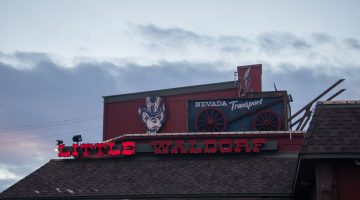By Margarita Salas Crespo
The Patient Protection and Affordable Care Act — commonly called the Affordable Care Act or “Obamacare” — is a comprehensive healthcare reform law that was signed into law by President Obama on March 23, 2010. Under the Affordable Care Act, insurance companies can no longer limit or deny coverage for pre-existing conditions, young adults can get covered under their parents’ health plan until the age of 26, and preventative care services are now available at no cost.
The new healthcare law offers an expansion of Medicaid, as well as federal financial assistance in the form of tax subsidies for those who meet certain requirements. Access to these resources is among the slew of benefits now at the disposal of uninsured Americans. Because options for affordable health care are now available, those who qualify but do not acquire insurance face penalties upon filing taxes.
In 2013, the Keiser Family Foundation ranked Nevada second in the nation for uninsured people. Latinos encompassed a particularly large portion of that uninsured population. When the first enrollment period kicked off in October 2013, thousands of Latinos nationwide reached out to navigator entities for help with the enrollment process. By Dec. 15, the Ramirez Group, a navigator entity, had a line going around its building with Nevadans looking to enroll by the end of the day to have effective insurance as of Jan. 1, 2014.
Outreach to the Latino community was a key goal of many states, including Nevada. Part of the outreach efforts included education about the healthcare reform and its implementation. This was significant for Latinos who are known for practicing unorthodox medicine methods as opposed to traditional, western medicine. One of the reasons that so many Latinos took the initiative to enroll was to avoid the penalties associated with the law for not securing the benefits it provided. The necessity for enrollment made the education about healthcare much more important.
Upon the establishment of the healthcare law, many ethnic groups like Latinos were faced with barriers. Preferring to use familiar cultural medicine practices tends to be the primary reason why Latinos are so resistant to western medicine. Part of the problem also comes from the inability to successfully communicate with Latinos who speak little or no English. Additionally, the health literacy among Latino communities tends to be very low.
For example, a BuzzFeed article entitled, “28 Things People Who Were Raised By A Mexican Mom Know To Be True” demonstrates the cultural beliefs of Mexican mothers. Number one says, “She believed VapoRub was a cure for everything.” This statement illustrates the cultural beliefs of home remedies associated with the Latino community. Regardless of the mockery intended by the piece, the statement embodies the problem of cultural barriers that exist among the community.
Being able to identify and respond to such problems among healthcare professionals is crucial when conducting enrollment. As an exchange enrollment facilitator for Nevada Health Link, Nevada’s state based exchange, I’ve learned that the first steps to take when assisting a Latino family is understanding its cultural background, assessing the level of healthcare literacy they posses, and making sure that important information is being shared in their language of choice, whether that be Spanish or English.
Aside from concerns about penalties, I received questions about how to sign up for “Obamacare” because people were happy about the thought of having health insurance for the first time in their life.
During the first enrollment period, thousands of Latinos were able to obtain health insurance through the Affordable Care Act. Noam N. Levey, from the Los Angeles Times, reported that the percentage of uninsured Latinos ages 19 to 64 fell from 36 percent to 23 percent.
There should be no reason why Latinos who qualify for tax subsidies or for the Medicaid expansion are uninsured. Help in Spanish is available through navigator entities and other organizations throughout Nevada.
With the enrollment period having just started again this past Saturday, our Latino community and all of Nevada should be getting ready to re-enroll, or enroll for the first time, if they missed the last enrollment period.
This enrollment period will be shorter than the last one, lasting for only three months (Nov. 15, 2014 – Feb. 15, 2015). It is very important that our communities reach out to navigator entities for enrollment assistance and other resources available to them, especially if they are currently uninsured and do not have a comfortable grasp of the English language or U.S. healthcare system.
Margarita Salas Crespo studies anthropology. She can be reached at dcoffey@unr.edu and on Twitter @TheSagebrush.









